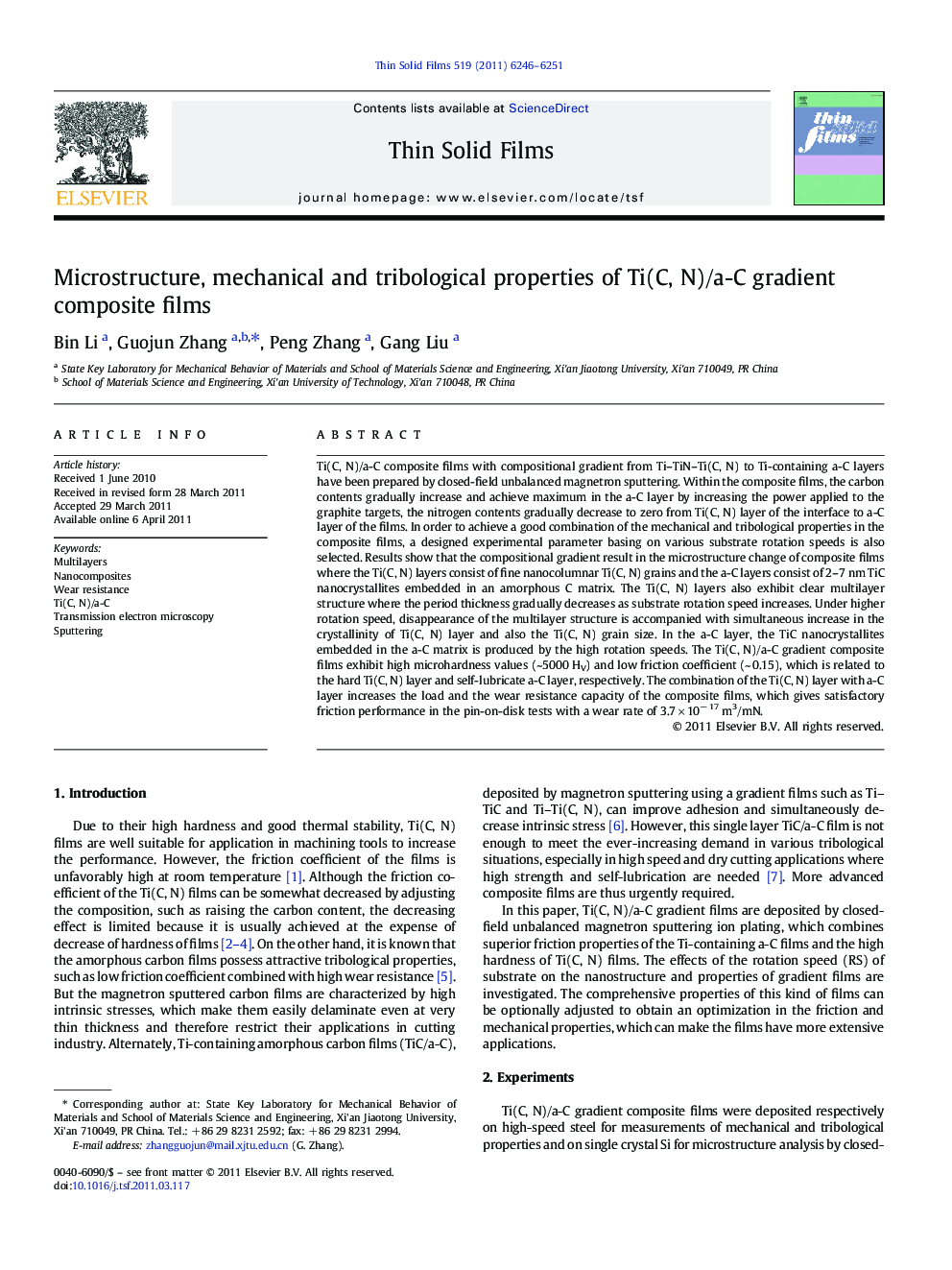| Article ID | Journal | Published Year | Pages | File Type |
|---|---|---|---|---|
| 1668257 | Thin Solid Films | 2011 | 6 Pages |
Ti(C, N)/a-C composite films with compositional gradient from Ti–TiN–Ti(C, N) to Ti-containing a-C layers have been prepared by closed-field unbalanced magnetron sputtering. Within the composite films, the carbon contents gradually increase and achieve maximum in the a-C layer by increasing the power applied to the graphite targets, the nitrogen contents gradually decrease to zero from Ti(C, N) layer of the interface to a-C layer of the films. In order to achieve a good combination of the mechanical and tribological properties in the composite films, a designed experimental parameter basing on various substrate rotation speeds is also selected. Results show that the compositional gradient result in the microstructure change of composite films where the Ti(C, N) layers consist of fine nanocolumnar Ti(C, N) grains and the a-C layers consist of 2–7 nm TiC nanocrystallites embedded in an amorphous C matrix. The Ti(C, N) layers also exhibit clear multilayer structure where the period thickness gradually decreases as substrate rotation speed increases. Under higher rotation speed, disappearance of the multilayer structure is accompanied with simultaneous increase in the crystallinity of Ti(C, N) layer and also the Ti(C, N) grain size. In the a-C layer, the TiC nanocrystallites embedded in the a-C matrix is produced by the high rotation speeds. The Ti(C, N)/a-C gradient composite films exhibit high microhardness values (~5000 HV) and low friction coefficient (~ 0.15), which is related to the hard Ti(C, N) layer and self-lubricate a-C layer, respectively. The combination of the Ti(C, N) layer with a-C layer increases the load and the wear resistance capacity of the composite films, which gives satisfactory friction performance in the pin-on-disk tests with a wear rate of 3.7 × 10− 17 m3/mN.
